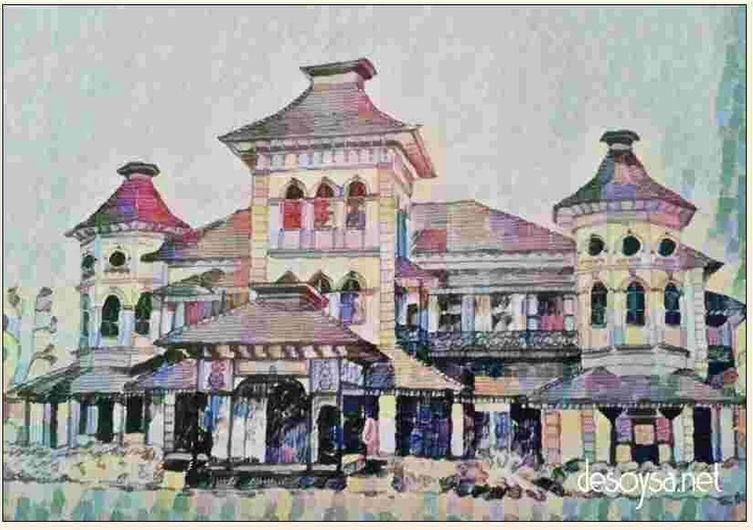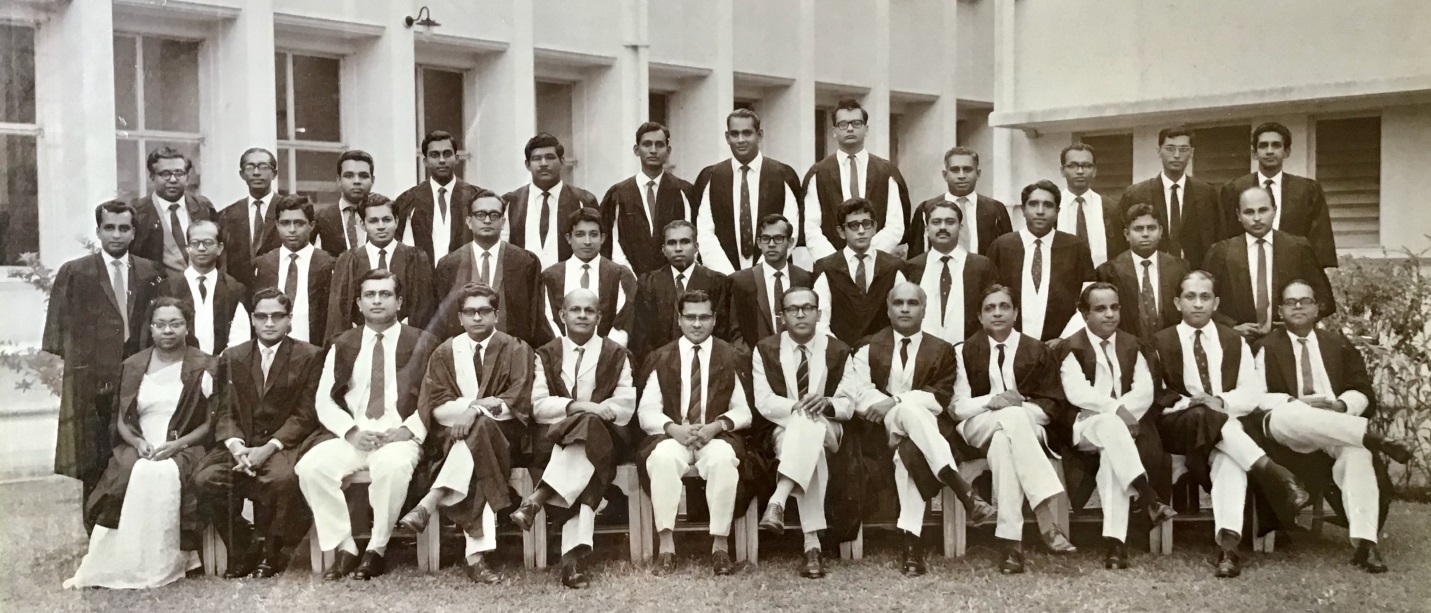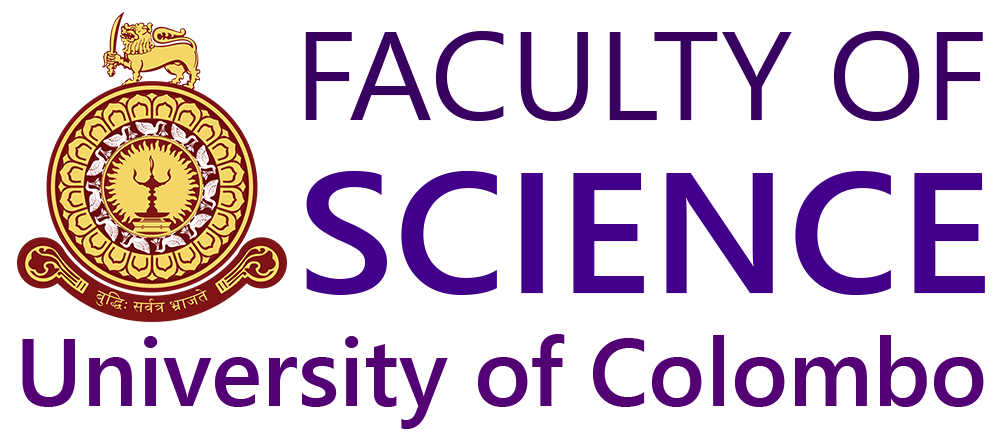100 Years of Excellence in Science
The University of Colombo, its 100 year evolution and role in promoting Science & Mathematics Education
The University of Colombo is recognized for its pioneering role in fostering Basic Sciences, Liberal Arts & Medical Education in the island. On January 21st 1921, 100 years ago, the Ceylon University College (CUC) came into being, providing the first opportunity of higher education in basic sciences and humanities to local students. The Ceylon University Association (CUA) formed in 1906 with the patronage of several influential Ceylonese elites like Ponnambalam Arunachalam, James Peiris and Marcus Fernando persuaded the then governor McCalum to set up the Ceylon University College (CUC). The main highlights of the recommendations were that the University College should provide (a) higher education in general, (b) courses in Arts and Science to teachers in training, (c) preliminary training in Chemistry, Physics and Biology for medical students and (d) hostel facilities of a residential nature with the patronage of the government. Implementation of the proposal commenced during Governor Chalmer’s time, and the main building of Royal College, Colombo was identified for establishing the CUC.

Regina Walawwa was once the property of Charles Henry de Soysa, a Ceylonese entrepreneur and philanthropist, considered the wealthiest native at the time and possibly the greatest philanthropist in the contemporary history of Sri Lanka. The sketch done in 1912 shows the Regina Walawwa, bought by the Government in 1921, which was the premises of the early Ceylon University College.
(Photograph Credit: www.desoysa.net)
Due to World War – I the setting up of new science laboratories and a new building to relocate the Royal College was halted. The matter was taken up for discussion again in 1917 by the succeeding Governor Manning and the Director of Education E.B. Denham. The government purchased the current College House premises known as “Regina Walawwa”, a property owned by the philanthropist Charles Henry de Soysa, to set up the lecture halls. CUC was formally opened on January 21st, 1921 under the direction of Mr. E. Evans the then acting Director of Education. Prof. R. Marrs soon succeeded as the principal of CUC and served for 18 long years. Admissions during the initial years were through invitation based on the performance in the Cambridge Senior Examination or the London Matriculation Examination and was even open to women. Courses were offered for University of London intermediate and final examinations (Arts and Science), the First-year Medical examinations in pure Science, the London intermediate Science (Economics) examination and for the training of secondary teachers. The Science classes were conducted in government technical schools and the other classes in College House. The CUC was governed by a statutory council, headed by the Governor with a Board of Study overlooking academic aspects. By 1936, the academic staff teaching Science and Mathematics had been expanded and comprised of Professor of Mathematics, Prof. C. Suntharalingam, lecturers in Mathematics U.D.R. Caspersz, F.H.V. Gulasekharam, and S. Nadarasar; Professor of Physics, Prof. J.P. Andrews, lecturers in Physics A.W. Mailvaganam and S.P. Baliga; Professor of Chemistry, Prof. A. Kandiah, lecturers in Chemistry E.L. Fonseka and L.D. Smith; Professor of Botany, Prof. N.G. Ball, lecturers in Botany P.C. Sarbardhikari and B.L.T. De Silva; and lecturers in Zoology D.R.R. Burt, W. Fernando and P. Kirthisinghe.
The proposal to establish the University of Ceylon at Uyanwatta site in the Dumbara valley in Peradeniya was approved in 1938. In March 1941, young Ivor Jennings, at the age of 37 took over as the principal of CUC and was instrumental in amalgamating the Ceylon Medical College founded in 1870 with the Ceylon University College to form the University of Ceylon in July 1942. Jennings became its first Vice Chancellor. Dr. C.W.W. Kannangara, played a pivotal role in bringing about important policy changes to introduce the Free Education scheme, the concept of Central Schools and the establishment of the University of Peradeniya, in Peradeniya making higher education more equitable to the children of the country. After the completion of construction in 1952, the Faculties of Arts and Oriental Studies as well as the main library and the University Administration were shifted to Peradeniya. It was only in 1961 that a separate student intake in Science to Peradeniya was considered after the formation of a Faculty of Science in Peradeniya. Many academics who served in the Faculty of Science, University of Ceylon shown in the photograph were instrumental in setting up departments in the new Faculties of Science and Engineering in the state universities established subsequently. Under the University Act No. 45 of 1958, the Universities of Kelaniya and Sri Jayewardenepura were established. In the years 1967 and 1973, Faculties of Science and Applied Sciences were established at the respective universities. The Ceylon Technical College situated in Maradana, was later shifted to Katubedda, Moratuwa and gained University status in 1972. The Department of Architecture, situated in Colombo was also transferred to Katubedda. By 1974, the University of Jaffna was established with its own Faculty of Science. The University of Sri Lanka was established in 1972 by amalgamating the four existing universities in Colombo, Peradeniya, Sri Jayewardenepura and Kelaniya. Later, the universities in Moratuwa and Jaffna were also incorporated. A new Universities act was introduced in 1978 with the intention of bringing greater autonomy and freedom to academics. As a result, the respective campuses of the University of Sri Lanka became independent universities.

The photograph shows a section of the notable and distinguished academics of the Faculty of Science, University of Ceylon.
Seated (L to R) – Prof. (Mrs.) WPD Pereira, Prof. KD Arudpragasam, Prof. PPGL Siriwardane, Prof. S. Cruz, Prof. AW Mailwaganam, Mr. SJ Walpita, Prof. BA Abeyawickrama, Prof. V. Appapilai, Prof. MS Thambiah, Prof. P. Kanagasabapathy, Prof. GP Wannigama, Prof. PW Vithanage.
Standing (L to R) 1st Row – Prof. S. Balasubramaniam, Prof. MD Dassanayake, Prof. V. Tharmaratnam, Prof. GA Dissanayake, Prof. PCB Fernando, Prof. PW Epasinghe, Prof. C. Dhanayake, Prof. SG Canagaratna, Prof. RGA Rodrigo, Prof. JKP Ariyaratne, Prof. MLT Kannangara, Prof. HH Costa, Prof. AH Sathananthan.
2nd Row (L to R) – Prof. MR Kulatilake, Prof. HNC Fonseka, Prof. PD Gunatilake, Prof. HW Dias, Prof.VK Samaranayake, Prof. M. Selvaratnam, Prof. RS Ramakishna, Prof. WWD Modder, Prof. RN de Fonseka, Prof. I Balasooriya, Prof.KOIF Jayaweera, Prof. OW Jayaratne.
(Photograph Credit: Family photograph collection from late Prof. B.A. Abeywickrama)
The following are some extracts of the address made by Prof. Ivor Jennings at the inauguration ceremony of the University of Ceylon. “Teachers who are studying the application and the development of their subjects are necessarily far better than those who are merely giving instructions in alien subjects. A university teacher who is doing no research is not a university teacher. The research in itself is as important as the teaching. To continue it is an obligation which we owe to the community. It is also an obligation which we owe to our students. The live lecture is that in which the teacher is expressing his own ideas, or at least ideas which he has thought over and personally accepted. In universities we are always on the border of knowledge looking into the unknown or at best the partially known. We are not teaching set facts which simply have to be accepted dogmatically. The data of one generation may be rejected by the next. For the purposes of education, nothing can be more beneficial. The effect of teaching for Ceylon examinations should be to encourage our teachers to develop new ideas or to work out new applications of the old. We are all aware that the best part of the education that we carried away from our own universities was not acquired in the lecture rooms and laboratories. Common rooms and playing fields are equally important, and private conversation is the most effective medium of instruction”.
After serving for nearly 22 years, Prof. Ivor Jennings assumed duties as Vice Chancellor of the University of Cambridge in 1961. His clear broad vision and insight as to what a university education should encompass is noteworthy. The vision of Prof. Jennings towards a holistic education is even relevant in current times. Therefore, the university community has a great responsibility to fulfill the aspirations of their forefathers.
